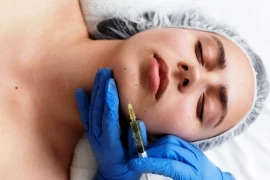
Dermatological Touches in Hair Transplantation
- Dermatological Touches in Hair Transplantation
- Causes of Hair Loss
- Hair Transplantation Methods
- Importance of Dermatological Touches
- Postoperative Care in Hair Transplantation
- Conclusion
Hair loss is a common issue for both men and women, significantly impacting one's self-confidence. Hair transplantation offers an effective and permanent solution to this problem. As dermatology specialists, we play a critical role in the hair transplantation process, providing significant contributions at every stage with our dermatological knowledge and experience.
Causes of Hair Loss
Hair loss can result from various factors. Here are the most common causes:
- Genetic Factors: Individuals with a family history of hair loss often experience hereditary hair loss, known as androgenetic alopecia.
- Hormonal Changes: Hormonal changes, especially in women during menopause, pregnancy, and postpartum periods, can lead to hair loss.
- Medical Conditions: Various medical conditions such as thyroid diseases, anemia, and autoimmune diseases can cause hair loss.
- Stress and Lifestyle: Severe stress, poor nutrition, and unhealthy lifestyle habits can trigger hair loss.
- Medications: Drugs such as chemotherapy agents, beta-blockers, and some antidepressants can lead to hair loss.
Hair Transplantation Methods
- Follicular Unit Transplantation (FUT):
- Method: Hair follicles are taken from the scalp in a strip, then dissected into individual follicular units under a microscope and implanted into the balding areas.
- Advantages: Allows for the transplantation of a larger number of follicles in one session.
- Disadvantages: Leaves a linear scar in the donor area, and the healing process may be longer.
- Follicular Unit Extraction (FUE):
- Method: Hair follicles are individually extracted using micro motors or manual punch tools and implanted into the balding areas.
- Advantages: Leaves no visible scars in the donor area, has a shorter recovery time, and results in a more natural look.
- Disadvantages: Takes longer, requires more expertise, and can be more expensive.

Importance of Dermatological Touches
As dermatology specialists, we play various critical roles in the hair transplantation process. Here are the important stages from a dermatological perspective:
- Evaluation and Diagnosis:
- Dermatologists conduct comprehensive evaluations to determine the cause of hair loss. Underlying medical conditions, hormonal imbalances, or dermatological diseases are identified and treated.
- Planning:
- Before hair transplantation, the patient's hair loss pattern, the condition of the donor area, and the recipient area are thoroughly examined. This assessment is crucial for determining the number of grafts and creating the implantation plan.
- Dermatological Preparation:
- Dermatologists may treat the scalp before hair transplantation to optimize skin health. Conditions like scalp infections, dandruff, or dermatitis are treated to prepare the scalp for the procedure.
- Transplantation Process:
- During hair transplantation, dermatologists ensure that hair follicles are placed at the correct angle and direction, which is vital for achieving natural and aesthetic results. Dermatologists also focus on maintaining the health of the scalp throughout the procedure.
- Postoperative Care:
- The recovery process after hair transplantation is carefully monitored by dermatologists. Necessary treatments and care recommendations are provided to reduce the risk of infection, speed up healing, and ensure the healthy growth of new hair.
Postoperative Care in Hair Transplantation
Postoperative care is crucial for achieving successful results. Here are some important points to consider:
- Healing Process:
- The scalp may be sensitive for the first few days. Dermatologists prescribe appropriate medications for pain management and to reduce the risk of infection.
- Shampooing and Cleaning:
- The first wash is typically done 2-3 days after the procedure following the dermatologist’s instructions. A gentle shampoo is recommended.
- Activities to Avoid:
- Heavy exercise, swimming, and sauna should be avoided for the first few weeks. Additionally, protecting the scalp from direct sunlight is important.
- Regular Check-Ups:
- Dermatologists monitor the healing process with regular follow-up appointments and intervene if necessary.
Conclusion
Hair transplantation offers a permanent and natural solution for individuals experiencing hair loss. Dermatology specialists play a crucial role at every stage of the hair transplantation process with their knowledge and expertise. With accurate diagnosis, proper planning, careful execution, and effective postoperative care, successful results are achieved. Hair transplantation is not only an aesthetic intervention but also a significant procedure that enhances a person's self-confidence and quality of life. The expertise and care of dermatologists ensure that this process is successful and satisfactory.

Spc. Dr. Enkhjargal Losol
Dermatology Specialist





